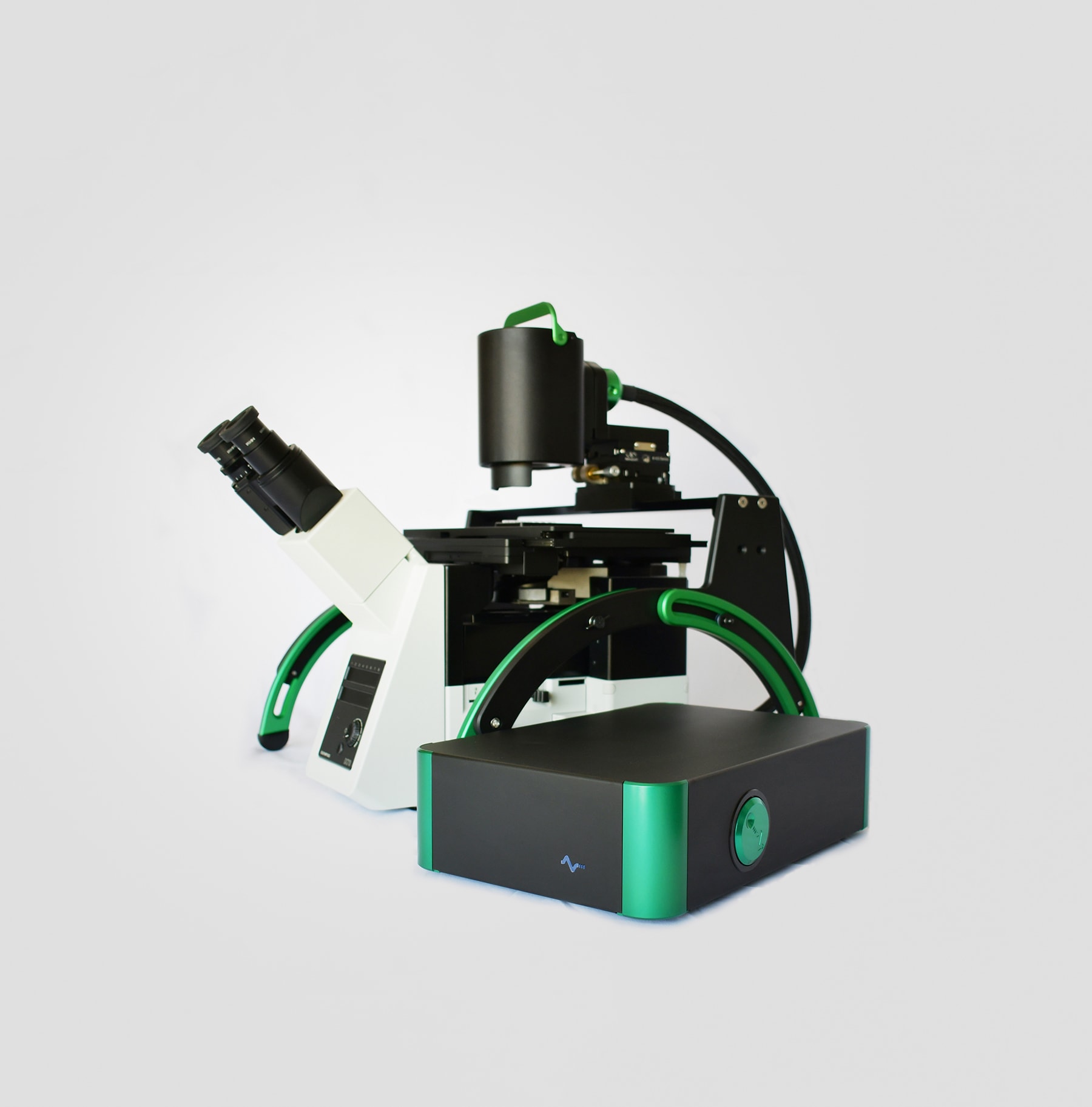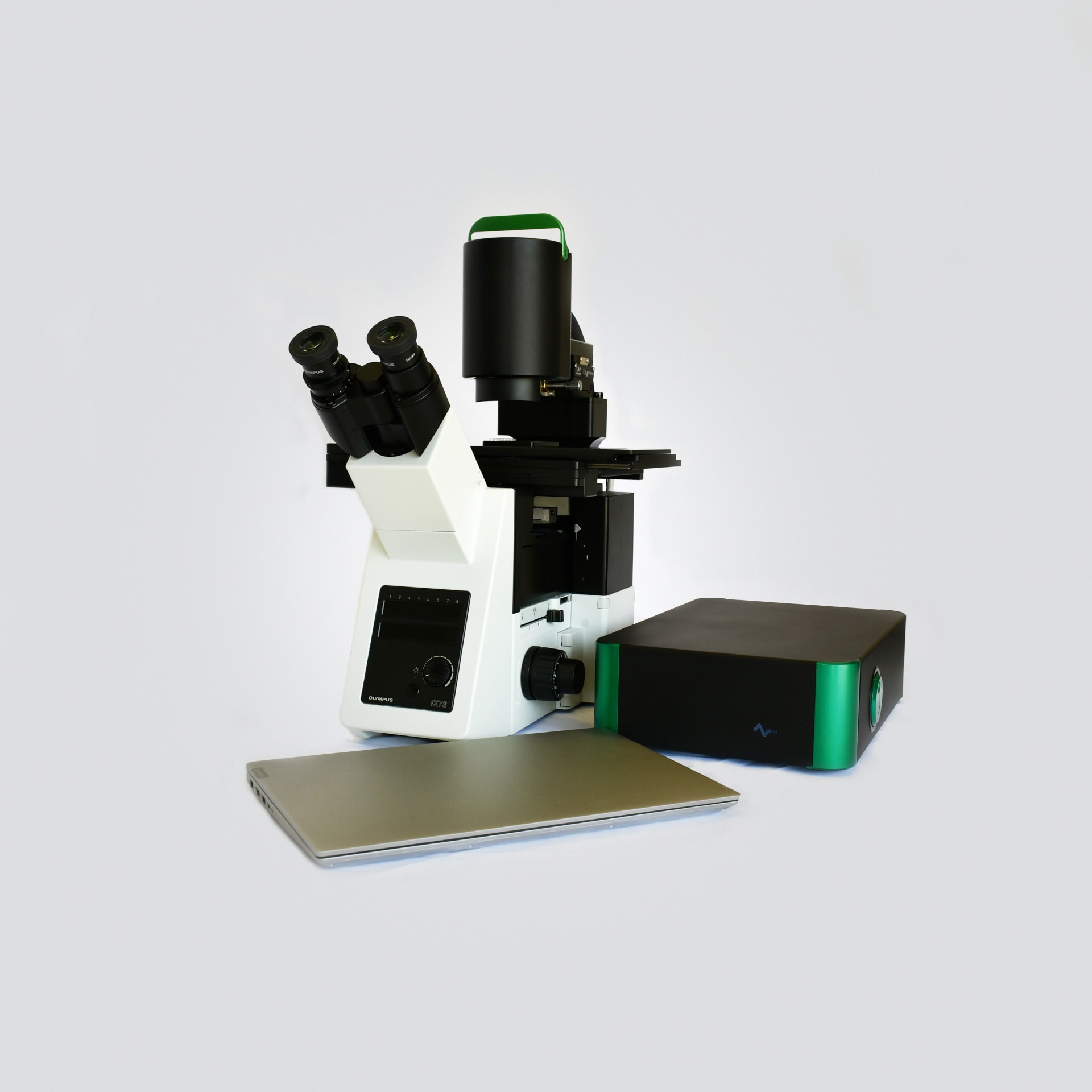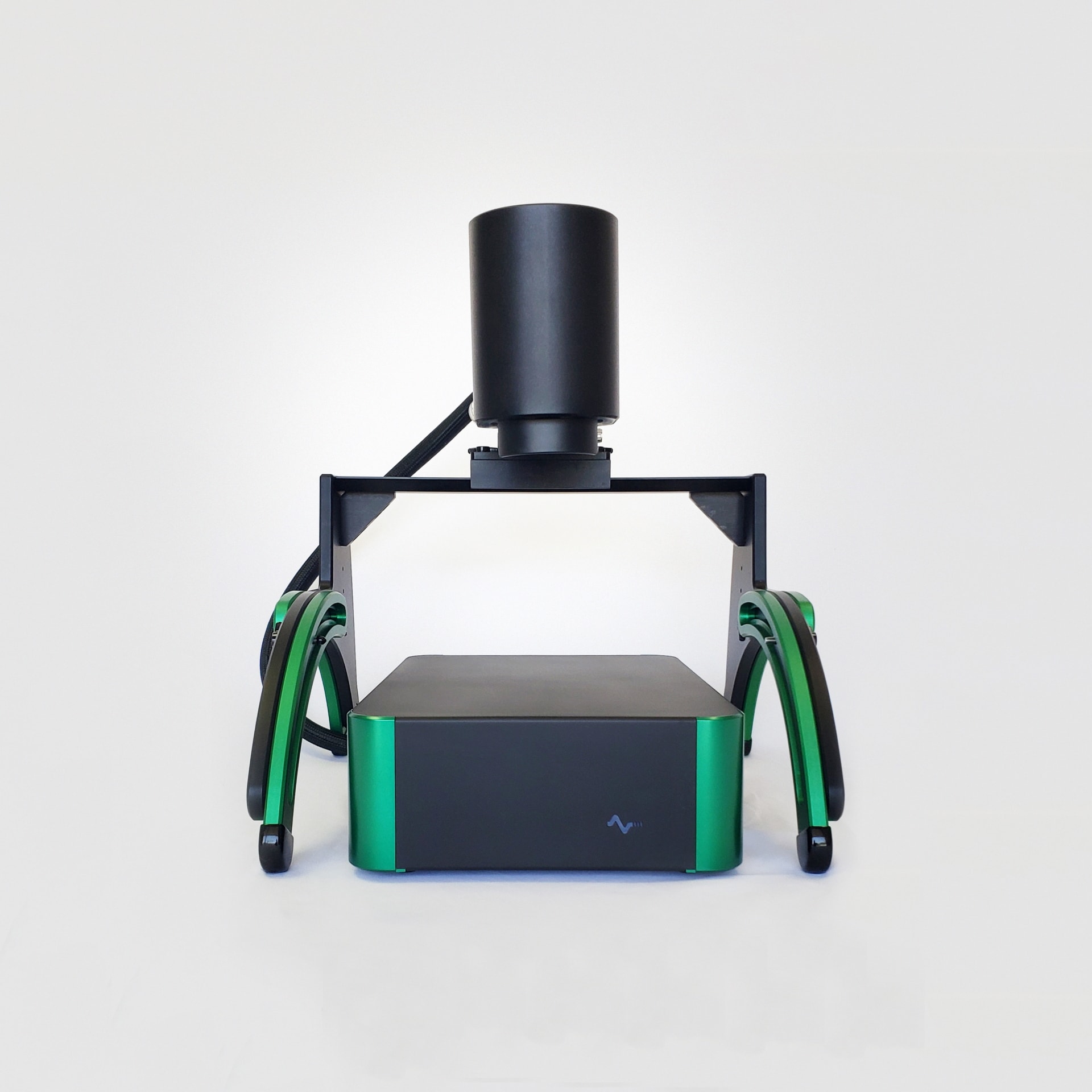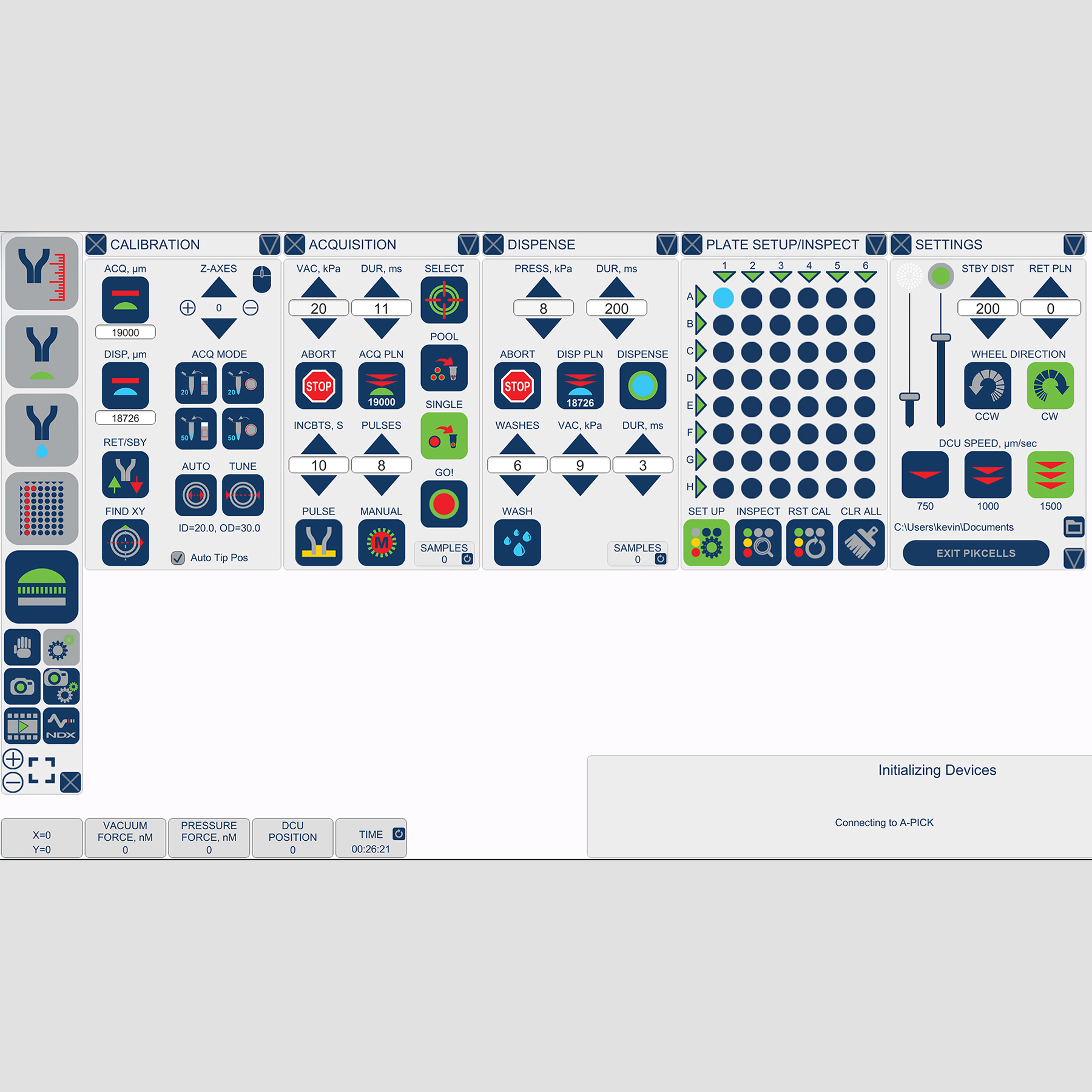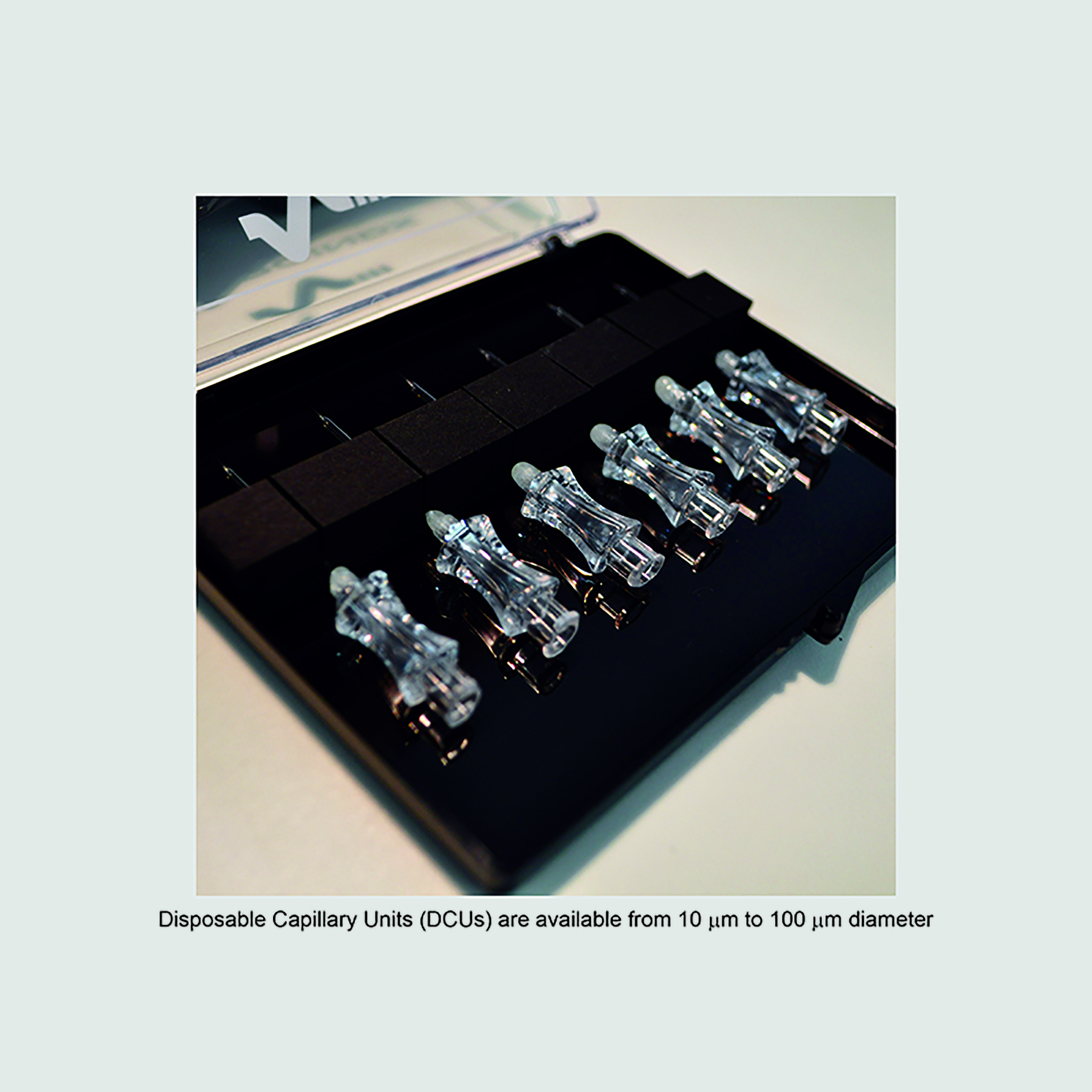A-picK™
A-picK™ is the latest fully automated member of the NDX family of products for the isolation of individual cells from cultures, single cell adherence test and tissue microdissection. The instrument can isolate cells from a variety of formats, including tissue sections, adherent cultures, cell suspensions, 3D cultures, smears, and microfluidic chips. It has the same capabilities in tissue microdissection and entire process is automated and maybe optimized using our proprietary software, PIKCELLS™. A-picK™ features an entirely new design and is directly integrated with Olympus IX73 or IX83 microscopes.
Specifications
InterfaceDigital (requires PC)
Maximum pressure5 PSI
Maximun vacuum10 PSI
Impulse duration0.1 to 1.0 sec
Sample CompatibilityAdherent cells, suspended cells, 3D cultures, native, fresh frozen, sucrose treated and fixed tissues, organoids
ResolutionSingle cell for cultures and 20 µm for tissue sections
Viability of Collected Cellsup to 95%
Available DCU IDs10 µm to 100 µm
Travel Step1.5 µm
Specimen Holder25 mm slides, 35 mm and 50 mm Peyri dishes, 48 PCR tube holder, 96- and 384-well plate compatible
Deposition Capacityup to 48 samples per run
Collection ModesSingle Cell/Well and Pooled Cells/Well
Acquisition VolumeDCU 20µm: 10 nl to 2.5 µl; DCU 30µm: 35 nl to 3.0 µl; DCU 40µm: 70 nl to 5.0 µl
Collection Speedup to 25 acquisition/deposition cycles per minute
Microscope CompatibilityOlympus IX73 and IX83
AutomationFully Automated, operated by PIKCELLS software
Video about A-picK
Notable Features
- Single and rare cell collection from adherent cultures and 3D cultures
- Efficient tissue microdissection and isolation of individual cells
- Single cell comparative and RAMP adhesion assays
- Isolation of regions of interests (ROIs) from fixed tissue specimen
- High viability of collected cells for clonal expansion
- High quality RNA and protein for downstream studies
- Integrated system with Olympus IX73 or IX83 inverted microscopes
- Motorized stage: Märzhäuser Wetzlar GmbH & Co.KG SCAN IM 120x80
- Intuitive software to control the collection and deposition process for multiple targets
- Capillary tip autocalibration and measurement
- PC with a high-resolution display and a mouse for system operation
- Digital camera: 5MP USB 3.0 CMOS Color Digital Microscope Camera + 2K Video
How it works
System capabilities and features:
- Automated cell collection and deposition of any adherent and suspension cells without pretreatment or specialized culture dishes
- Automated cell collection and deposition of individual multicellular sphere from 3D cultures without pretreatment or specialized culture dishes
- Automated cell collection and deposition of cells from microfluidic chips without pretreatment or specialized culture dishes
- Automated microdissection from native and fresh frozen tissue sections (up to 500 µm for some tissues) including brain, lung, liver, spleen, kidney, etc.
- Two collection modes: single cell collection and single cell pooling
- Protocol for automatic collection of regions of interest (ROIs) from fixed tissues (e.g. FFPE) using tissue liquefying approaches
- Target size from few micrometers to a few hundred ensuring wide spectrum of collection conditions
- Fully adjustable parameters for pulse duration, vacuum and pressure strengths, speed, and capillary rinsing sequence
Instant calculation of applied force for collection or deposition provided - Single cell adhesion assay permitting comparative and direct adhesion/detachment assays for multiple single cells
- Data storage and retrieval as a tab delimited file
- Image analysis and collection inspection with prior and post image recording of each collection event
- Collections in both bright and dark fields
- Unprecedented flexibility for collection-deposition modes that can be performed from plate to plate, plate to slide, slide to plate, slide to slide, slide to 48-well plate (enables compatibility with 96 plate formats), slide to PCR tubes, and plate to PCR tubes
- Simplified calibration sequence and several default presets for standard collection protocols
- Compatibility with standard biological safety cabinet and cell culture hood
- High viability of collected cells for efficient clonal expansion of collected cells
- Full compatibility with single cell analysis protocols
If you still have questions about the delivery, installation and operation of the device, see the answers in the FAQ section
Enter your contact details and we will call you back within 15 minutes
We will contact you and answer all your questions
For technical reasons, your application was not sent. We are sorry. Try again or email us at info@neuroindx.com

